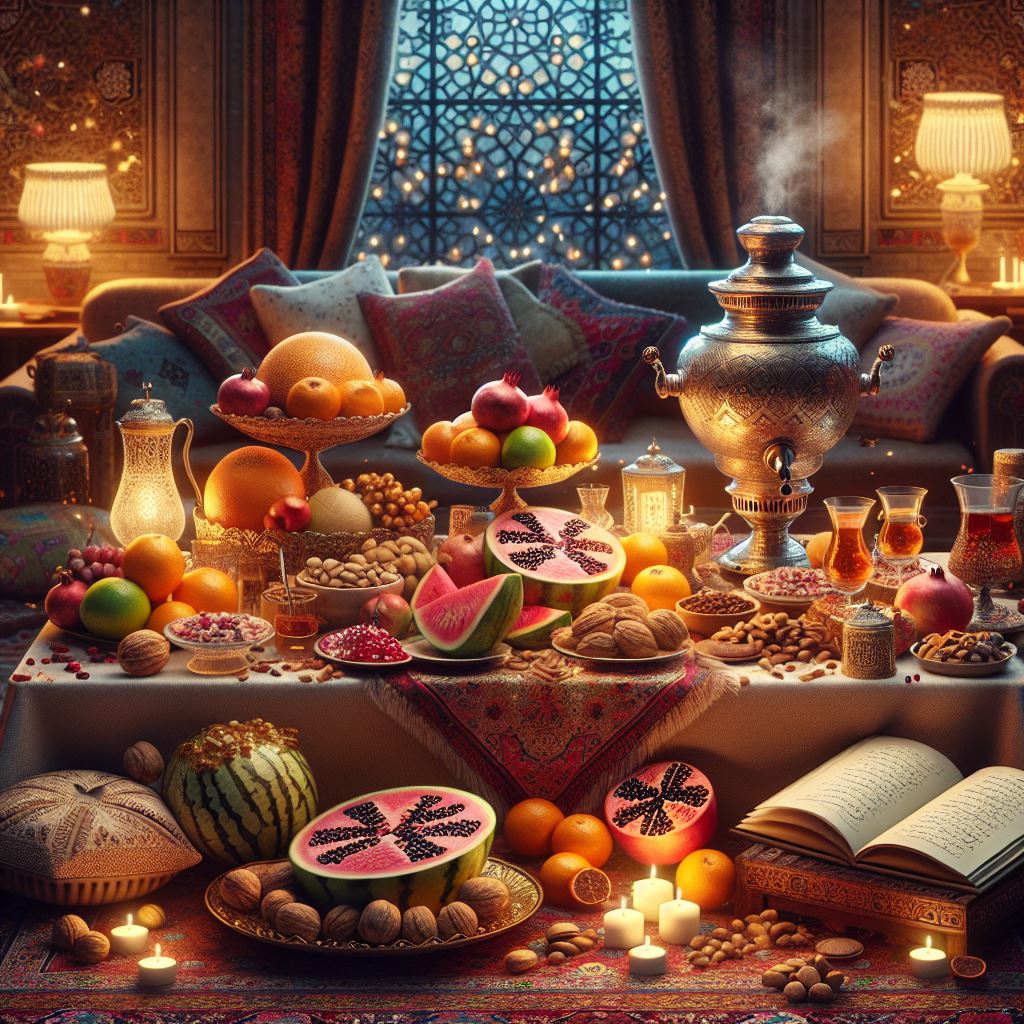Yalda Night, also known as Shab-e Yalda, is an ancient Persian festival celebrated on the longest night of the year, which falls on the winter solstice, around December 20th or 21st. This night marks the triumph of light over darkness and the renewal of the sun.
Historical Significance
Yalda has been celebrated for centuries, dating back to the time of the Persian Empire. The word “Yalda” means “birth” and symbolizes the rebirth of the sun. The festival is rooted in Zoroastrian traditions, where the victory of light over darkness was a significant theme.
Traditions and Customs
Family Gatherings: Families come together to celebrate Yalda Night, often at the home of the eldest family member. It is a time for bonding, storytelling, and creating lasting memories.
Eating Fruits and Nuts: A variety of fruits and nuts are enjoyed, with pomegranates and watermelons being particularly significant. The red color of these fruits symbolizes the glow of life and the crimson hues of dawn.
Reading Poetry: It is customary to read poetry, especially the works of Hafez, a revered Persian poet. Families often perform “Fal-e Hafez,” a tradition of divination using Hafez’s poetry.
Lighting Candles: Candles are lit to symbolize the victory of light over darkness. This act represents hope and the promise of brighter days ahead.

Modern Celebrations
Today, Yalda is celebrated not only in Iran but also in countries with Persian cultural influence, such as Afghanistan, Tajikistan, and Azerbaijan. The essence of the celebration remains the same: cherishing the company of loved ones, enjoying delicious food, and welcoming the return of longer days.